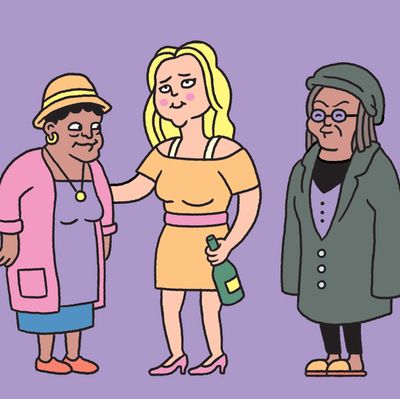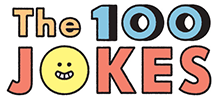
Among club comics of the mid-1970s, Elayne Boosler was the queen bee. A funny lady from Brooklyn, Boosler started at the New York Improv as a waitress and singer, and it wasn’t long before she was onstage telling jokes like the guys of her generation. But as a woman, Boosler had to take more risks than her peers. That meant volunteering to follow hot comics like Richard Pryor or Freddie Prinze, while male comics let audiences cool off before trying out a set. Over time, Boosler developed the persona of a funny, sexy, smart woman. She was unquestionably feminist, though more by dint of being a liberated woman than any particular agenda. “[Men] want you to scream, ‘You’re the best,’” went one of her jokes, “while swearing you’ve never done this with anyone before.” Boosler believed strongly in authenticity, and deplored the self-deprecating shtick of predecessors such as Phyllis Diller and Joan Rivers. That approach caused her some problems, particularly when she finally got her shot on Johnny Carson’s Tonight Show.
In the 1970s, Carson was the comedy Establishment’s king. All a stand-up needed to do was a set on The Tonight Show, and if Carson gave you the thumbs up — or, better yet, an invitation to sit on his couch — that comic’s career was made. Comedian Tom Dreesen got a development deal out of it; Prinze landed a starring role on the TV show Chico and the Man. Problem was, Carson didn’t like female comics.
“I mean, if a woman comes out and starts firing one-liners, those little abrasive things, you can take that from a man,” Carson told Rolling Stone in 1979. “I think it’s much tougher for women. You don’t see many of them around. And the ones that try are sometimes a little aggressive for my taste.”
Boosler first appeared on the Tonight Show in August 1977, when Helen Reddy was guest-hosting. A month later, she got a turn with Carson. It did not go well. “I went in to do The Tonight Show, I had a beautiful set all prepared, and they put someone on my case to write jokes,” Boosler recounted to the New York Times in 1987. “I remember the first joke I was handed went, ‘I’m so ugly, I can’t make a nickel on a battleship,’ I just refused to do it.” After the set, Carson reportedly told his comedy booker, “I don’t ever want to see that waitress on my show again.” (This account was originally gathered for my book We Killed: The Rise of Women in American Comedy.)
Boosler’s story isn’t just a single anecdote about overcoming barriers — it’s also illustrative of a worldview that historically permeated the entertainment Establishment. It was the kind of thinking that led comedy clubs (who wanted to please network bookers) to limit the number of women on a lineup; that shuttled women into all-female comedy nights with mostly female (and gay) audiences; that kept most female stand-ups from turning their acts into sitcoms; and that led network execs to cast clumsy bombshells over professional funny gals. Any male comics talking today about how political correctness has created an air of censorship should remember that women have long been fighting notions of what’s appropriate for them to joke about. All of this had the effect of pushing women who didn’t fit a particular mold — brassy, catty, unfeminine — to the fringes. That meant working in alternative comedy spaces and, crucially, relying on alternative media outlets to increase their visibility. In the 1980s, that was cable television; today, it’s YouTube, Netflix, and the like. This was where women got to be funny on their own terms.
There have always been funny women, but only a handful made it to the mainstream, and so history has written them off as outliers — token ladies on lists otherwise populated by men. Things are different now: Lena Dunham, Amy Schumer, Melissa McCarthy, Tig Notaro, Tina Fey, and the modern ladies of SNL — these women are not just considered “funny for girls,” as people used to say. They have managed to take their experience and spin it into something even men consider universal. The fact that there are many of them is also significant because, rather simply, there is strength in numbers. There is no tokenism here. But getting to this point, as tracked in Vulture’s 100 Jokes That Shaped Modern Comedy, has been a 40-year evolution.
The first surge of funny women into comedy happened during the stand-up boom of the 1970s and 1980s. That was when droves of young women, inculcated with the politics of feminism, started to flood stand-up comedy clubs, which were rapidly multiplying nationwide. But the clubs weren’t so welcoming. Becoming proficient at stand-up requires reps in front of a live audience, but for women, stage time was hard to come by. That’s because of sexist rules among those who scheduled comedy shows, that you could only have one woman on any given lineup; or at open-mic nights, two women could never be put back to back. That meant women had to find time by playing all-women’s comedy nights, where audiences were largely women and gay men. At the Comedy Store in Los Angeles (which was owned and run by a woman, Mitzi Shore), women were relegated to a secondary stage in an upstairs corner of the club called the Belly Room. The Belly Room was a pink ghetto, where women were segregated from the men. (Boosler refused to perform there.) It was unfair, and sexist, to be sure, but in retrospect, it gave women a chance to practice frequently, and practice offbeat material without limitations, and away from the misogyny of hecklers and other male comics.
This is what Sandra Bernhard did, whose act was more of a performance-art-type comedy. “It was definitely a different vibe,” Bernhard said in an interview in the book. “Women could be more themselves, and they weren’t under the pressure of following a man who was doing really tacky, sexist, racist humor.” Whoopi Goldberg, whose stand-up was made up of funny but dark character monologues, including a surfer chick who gives herself an abortion and a little black girl who wanted to be white, also performed in the Belly Room. “Mitzi and I became friends, and she said, ‘Whenever you want to come here and do something, you can come,” Goldberg said in an interview for the book. “I never wanted to put her in the position of saying, ‘Listen, I can’t really put you in the Main Room because the guys will have their little mini freak-out. So would you do the Belly Room?’” Whoopi Goldberg’s act was radical, dangerous, and caused a stir. She performed it on Broadway, directed by Mike Nichols, and eventually it aired on HBO. And yet Goldberg’s movie and television roles never had the same edge.
In the 1990s, a new generation of male and female comics moved away from comedy clubs and started working in alternative venues. This is what became known as alternative comedy, and in these spaces, women and men shared the same stage. Janeane Garofalo, who had become a star through roles on MTV’s Ben Stiller Show and Reality Bites, was a real force in this movement, generally, but was especially encouraging to a new generation of frustrated female comics who were tired of the indignities that came with working at comedy clubs. Garofalo believed that comedy was more about telling the truth than it was about having a tight ten-minute comedy routine, and encouraged women to work out that kind of material in alternative venues — coffeehouses, laundromats, theaters. This is the movement that brought us stars like Kathy Griffin, known for her stream-of-consciousness rants about her family and showbiz, and Margaret Cho, whose routines about growing up Asian-American, women’s issues, LGBTQ rights, and sex were funny but also intense.
Sarah Silverman upped the ante. Juxtaposing a sweet and ditzy persona against a shockingly blue pottymouth, she was a revelation. “I was raped by a doctor, which is so bittersweet for a Jewish girl,” went one of her most famous jokes. Silverman’s crassness was one of the biggest shifts for women in comedy (to say nothing of her tremendous influence on comedy in general, as she kicked off a trend that saw every stand-up writing a rape joke).
These are the backchannels through which feminist humor evolved. And it’s hard to imagine the impact these women would have made were it not for cable television, since frankly, these women weren’t succeeding on major networks. Take, for example, Garofalo and Silverman, revolutionary voices who were unable to get any traction when they worked on established shows like Saturday Night Live. When ABC tried to spin Cho’s work into a sitcom, All-American Girl, it was a disaster for the way it put pressure on Cho to lose weight, and also for reinforcing Asian stereotypes. (It lasted a season.) Cable was different. And although it wasn’t a panacea for women — in the beginning, women usually had to join group shows. Women of the Night was an HBO series that focused on clusters of women — it was an opportunity for women to build a bigger audience, perform more risqué material, and increase television credits. And over time they started to get their own solo shows, too.
Which brings us to today. The emergence of new female voices over the past five years has brought us to a point where the importance of women in American comedy cannot be glossed over, and there is no going back.
This has been driven by a couple things: The first is the rise of identity politics, which has reinvigorated feminism and created a demand for points of view that go beyond those of white men. Arguably more important, however, is that media has caught up. Mass culture is in decline, and niche audiences (ratings, for example, don’t need to be as big as they used to) are the goal. Social media has further democratized the entertainment world by letting audiences directly express their approval with likes. And YouTube and podcasts have made it possible to create and disseminate work without a middleman. Women have been thriving in these alternative channels for years, and now that the alternative is the norm, female comedians were especially prepared to take advantage of a new climate.
Lena Dunham got her start posting comedy sketches on YouTube and creating at least two web series. Tig Notaro’s legendary impromptu set about her breast-cancer diagnosis, starting with tweets from comedians in attendance, went viral instantly and then was able to be released directly to fans through Louis C.K.’s website. They, as well as other established (like Amy Schumer, Samantha Bee, Chelsea Handler, and Mindy Kaling) and emerging female comedians (like Issa Rae, Cameron Esposito, Jo Firestone, and Aparna Nancherla), are the voices of their generation. Female comedians have always been ahead of their time; now, at last, their time is catching up to them.





